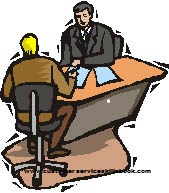CorvisaCloud Survey Finds That Most Customers Dread Having to Contact Customer Service
How bad is customer service these days? According to a study by CorvisaCloud, 15% of customers dread waiting on hold to talk to a customer service agent more than sitting in a dentist’s chair. As this study indicates, there is limited satisfaction for a lot of customers.
Many things contribute to the perception that organizations are not doing enough to engage customers in a variety of ways or to identify and satisfy their needs, wants and expectations. These potential challenges to positive service might range from the service environment or practices to the organization’s deliverables.
A deliverable may be a tangible item manufactured or distributed by the company, such as a piece of furniture or service available to the customer, such as pest extermination. In either case, there are two potential areas of customer satisfaction or dissatisfaction – quality and quantity. If your customers receive what they perceive as a quality product or service to the level that they expected, and in the time frame promised or viewed as acceptable, they will likely be happy. On the other hand, if customers believe that they were sold an inferior product or given an inferior service or one that does not match their expectations, they will likely be dissatisfied and could take their business elsewhere. They may also provide negative word-of-mouth advertising for the organization.
The way to help ensure that you are not taking actions or failing to act in a manner that might potentially create dissatisfaction, spend some time examining your own service practices. Also, evaluate the policies and procedures used by others in the organization. If you find potential problem areas, make recommended changes to your supervisor so that in the future all employees can offer the best customer service possible.
For ideas and strategies on effectively providing service to your customers, get a copy of How to Be a Great Call Center Representative, Please Every Customer: Delivering Stellar Customer Service Across Cultures, and Customer Service Skills for Success.
About Robert C. Lucas
Bob Lucas has been a trainer, presenter, customer service expert, and adult educator for over four decades. He has written hundreds of articles on training, writing, self-publishing, and workplace learning skills and issues. He is also an award-winning author who has written thirty-seven books on topics such as, writing, relationships, customer service, brain-based learning, and creative training strategies, interpersonal communication, diversity, and supervisory skills. Additionally, he has contributed articles, chapters, and activities to eighteen compilation books. Bob retired from the U.S. Marine Corps in 1991 after twenty-two years of active and reserve service.
Make Money Writing Books: Proven Profit Making Strategies for Authors by Robert W. Lucas at Amazon.com.
The key to successfully making money as an author and/or self-publisher is to brand yourself and your company and to make yourself and your book(s) a household name. Part of this is face-to-face interaction with people at trade shows, library events, book readings, book store signings, blogging or guest blogging on a topic related to their book(s). Another strategy involves writing articles and other materials that show up online and are found when people search for a given topic related to a topic about which the author has written.
If you need help building an author platform, branding yourself and your book(s) or generating recognition for what you do, Make Money Writing Books will help. Bob’s popular book addresses a multitude of ideas and strategies that you can use to help sell more books and create residual and passive income streams. The tips outlined in the book are focused to help authors but apply to virtually any professional trying to increase personal and product recognition and visibility.








